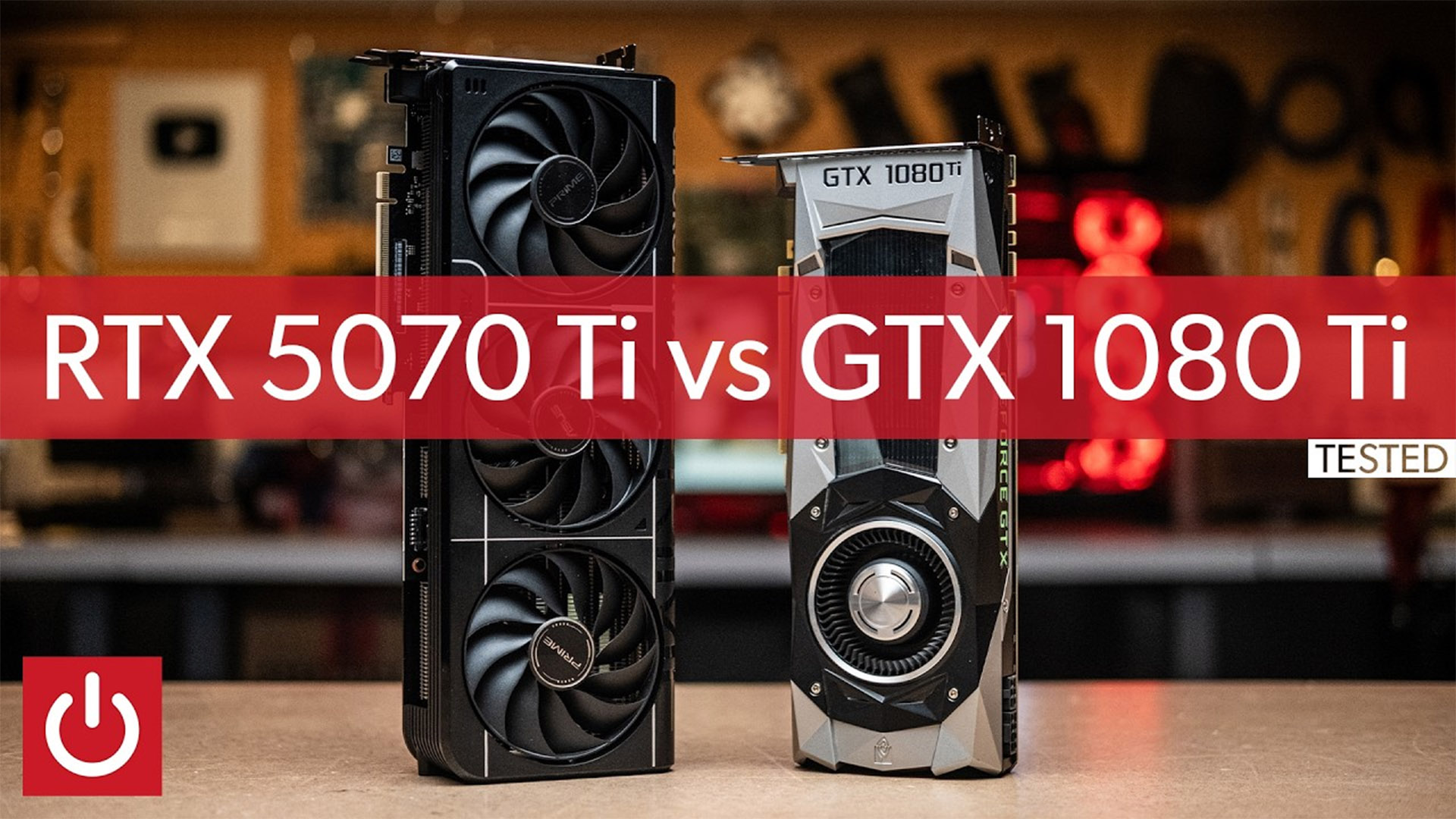
The RTX 5070 Ti vs. GTX 1080 Ti: A Comparison Across Time
Introduction
In the ever-evolving realm of computer hardware, advancements in graphics technology have been nothing short of remarkable. Eight years ago, the GTX 1080 Ti reigned supreme, boasting unparalleled performance and etching its name as an iconic graphics card. Today, the RTX 5070 Ti emerges as the bronze medal contender in Nvidia’s current lineup, priced at a staggering $750. But how does this modern-day contender stack up against the legendary GTX 1080 Ti, which graced the market in 2017 at a more modest $700?
Performance Benchmarks
Eight years in the graphics card industry is an eternity. While the GTX 1080 Ti was once the undisputed champion, conventional wisdom suggests that it should now pale in comparison to the 5070 Ti, four generations later. And indeed, benchmark data confirms this expectation.
The RTX 5070 Ti delivers an impressive two to three times the FPS (frames per second) when gaming on an identical test bench. In some cases, the performance gap is even more pronounced, with the 5070 Ti boasting triple the FPS in games like Shadow of the Tomb Raider.
Ray Tracing and AI Capabilities
The 10-series graphics cards marked the end of the GeForce GTX era and the dawn of GeForce RTX, a technology that brought ray tracing to the forefront. As expected, the RTX 5070 Ti enjoys a significant advantage in this area, making it virtually impossible for the older GTX 1080 Ti to handle ray tracing with Nvidia’s modern systems.
Additionally, AI applications that heavily rely on dedicated hardware, such as text generation, experience a significant boost on the RTX 5070 Ti. Nvidia’s commitment to AI acceleration has paid off, granting the newer card an overwhelming edge in this realm.
Practical Considerations
While the RTX 5070 Ti reigns supreme in terms of raw performance and modern features, the GTX 1080 Ti still holds its own in certain scenarios. At 1440p resolution with 2x upscaling and high graphical settings, the GTX 1080 Ti can still deliver a respectable 60 FPS in games like Assassin’s Creed Valhalla and Call of Duty: Black Ops 6.
This performance level ensures a decent gaming experience even without ray tracing. By further adjusting graphical settings, the GTX 1080 Ti can maintain smooth gameplay at 60 FPS even in demanding titles like Cyberpunk 2077.
Conclusion
If you’re still clinging to your GTX 1080 Ti from seven or eight years ago and aren’t an avid ray tracing enthusiast, you can rest assured that your aging card still has plenty of life left in it. It may not match the blistering speeds of the RTX 5070 Ti, but it can still provide an enjoyable gaming experience at 1440p and below.
Of course, if you’re chasing the ultimate in performance and modern features, the RTX 5070 Ti is the undeniable choice. However, its hefty price tag may be a deterrent for some, making the GTX 1080 Ti a viable option for those on a budget or those who don’t require the absolute best.
Ultimately, the decision between the two cards depends on your individual needs and preferences. If you’re a hardcore gamer who demands the latest and greatest, the RTX 5070 Ti is the clear winner. But if you’re willing to sacrifice some performance and features, the GTX 1080 Ti remains a capable and affordable alternative that can still handle most games with ease.
